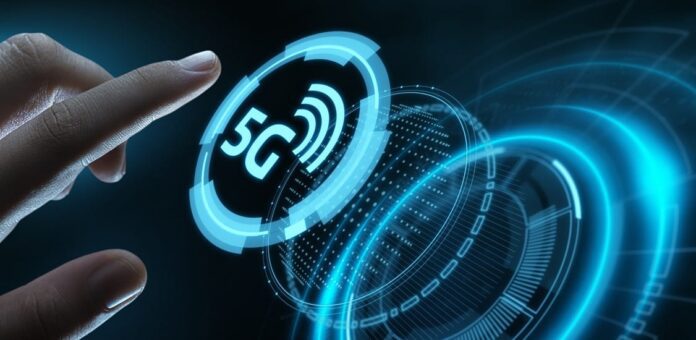Introduction
The emergence of 5G technology marks a significant leap forward in the realm of telecommunications, promising unparalleled speeds, low latency, and vast connectivity. As the world eagerly embraces this technological marvel, its impact is poised to reshape industries and revolutionize everyday experiences. In this piece, we will explore the evolution, applications, future outlook, challenges, and opportunities within the realm of 5G technology, and how it can impact our lives in positive ways.
Evolution of Connectivity: From 1G to 5G
The history of mobile network generations spans over four decades, from the first analog cellular networks in the 1980s to the current digital networks in the 2010s. Each generation has brought significant improvements in speed, capacity, and quality of mobile communications, enabling new services and applications for users.
1G to 4G: A Journey Through Generations
The first generation (1G) of mobile networks was introduced in the early 1980s, using analog signals to enable voice calls between mobile phones. The 1G networks had low capacity, poor quality, and limited coverage, and were prone to security breaches and interference.
The second generation (2G) of mobile networks was launched in the early 1990s, using digital signals to enable voice and text communication between mobile phones. The 2G networks offered higher capacity, better quality, and greater security than 1G networks, and introduced services such as SMS, MMS, and email.
The third generation (3G) of mobile networks was deployed in the early 2000s, using digital signals to enable voice, text, and data communication between mobile phones. The 3G networks offered higher speeds, lower latency, and wider coverage than 2G networks, and enabled services such as video calling, web browsing, and online gaming.
The fourth generation (4G) of mobile networks was rolled out in the early 2010s, using digital signals to enable voice, text, and data communication between mobile phones. The 4G networks offered higher speeds, lower latency, and higher capacity than 3G networks, and enabled services such as HD video streaming, social media, and cloud computing.
The Rise of 5G: Unraveling the Innovation
The fifth generation (5G) of mobile networks is the latest and most advanced technology standard for cellular networks, which began deploying worldwide in 2019, and is the successor to 4G technology that provides connectivity to most current mobile phones. The 5G networks use digital signals to enable voice, text, and data communication between mobile phones and other devices, such as IoT sensors, drones, and robots.
The 5G networks offer unprecedented speeds, low latency, and massive device connectivity, surpassing the capabilities of previous generations. The 5G networks can deliver peak data speeds of up to 10 gigabits per second (Gbps), which is 100 times faster than 4G networks. The 5G networks can also achieve ultra-low latency of less than 1 millisecond (ms), which is 10 times lower than 4G networks. The 5G networks can also support up to 1 million devices per square kilometer, which is 100 times more than 4G networks.
5G in Various Industries
The 5G technology has the potential to transform various industries, offering new possibilities and opportunities for innovation and growth. The 5G technology can enable new services and applications that require high speed, low latency, and massive device connectivity, such as augmented reality, virtual reality, cloud computing, and artificial intelligence. Some of the most prominent and popular applications of 5G technology in various industries are:
Telecommunications and Connectivity
The 5G technology can enhance the network speeds and bandwidth, facilitating faster data transfer and communication. This can improve the user experience and satisfaction, as well as the network performance and reliability.
The 5G technology can also impact the mobile communication, enabling seamless connectivity and improved call quality. This can enable new features and functionalities, such as high-definition voice and video calls, multi-party conferencing, and real-time translation.
Healthcare and Telemedicine
The 5G technology can enable new applications in healthcare and telemedicine, such as remote surgeries and real-time patient monitoring. This can improve the access and quality of healthcare services, as well as the efficiency and safety of medical procedures.
The 5G technology can also provide advantages for telemedicine, such as better connectivity and reduced latency. This can enable remote diagnosis, consultation, and treatment, as well as the transmission of medical data and images, enhancing the convenience and effectiveness of healthcare delivery.
Manufacturing and Industry 4.0
The 5G technology can enable the integration of smart factories, where IoT devices and robotics can communicate and coordinate with each other and with humans. This can improve the operational efficiency and productivity, as well as the flexibility and customization of manufacturing processes.
The 5G technology can also enable predictive maintenance, where AI algorithms can analyze the performance data of machines and equipment, and detect and prevent potential failures and malfunctions. This can reduce the downtime and maintenance costs, as well as the environmental impact of manufacturing activities.
Automotive and Smart Transportation
The 5G technology can enable connected and autonomous vehicles, where vehicles can communicate and exchange data with each other and with the infrastructure, such as traffic lights and road signs. This can improve the safety and efficiency of transportation, as well as the comfort and convenience of passengers.
The 5G technology can also enable smart transportation, where AI algorithms can optimize the traffic flow and management, and provide real-time information and guidance to drivers and travelers. This can reduce the congestion and pollution, as well as the travel time and costs.
Challenges and Opportunities
The 5G technology also poses some challenges and opportunities, which need to be addressed and leveraged to ensure its successful implementation and adoption. Some of the key challenges and opportunities of 5G technology are:
Infrastructure Development
The 5G technology requires the development and deployment of new infrastructure and equipment, such as base stations, antennas, and spectrum. This can pose some technical and financial challenges, such as the availability and allocation of spectrum, the installation and maintenance of equipment, and the compatibility and interoperability of devices.
The 5G technology also offers some opportunities for innovation and economic growth, such as the creation of new jobs and businesses, the stimulation of research and development, and the enhancement of competitiveness and productivity.
Security and Privacy Concerns
The 5G technology involves the transmission and storage of large amounts of data, which can pose some security and privacy risks, such as the unauthorized access, tampering, or leakage of data, the cyberattacks and hacking of devices and networks, and the violation of personal and confidential information.
The 5G technology also requires some measures to mitigate the potential cyber threats, such as the encryption and authentication of data, the protection and monitoring of devices and networks, and the compliance and regulation of data privacy and security standards.
Conclusion
The advent of 5G technology heralds a new era of connectivity, promising transformative changes across industries and society. As businesses and individuals embrace this wave of innovation, the potential for growth, efficiency, and seamless connectivity is boundless. The 5G technology is not only a product of innovation, but also a catalyst for innovation, inspiring new possibilities and opportunities for the future.










